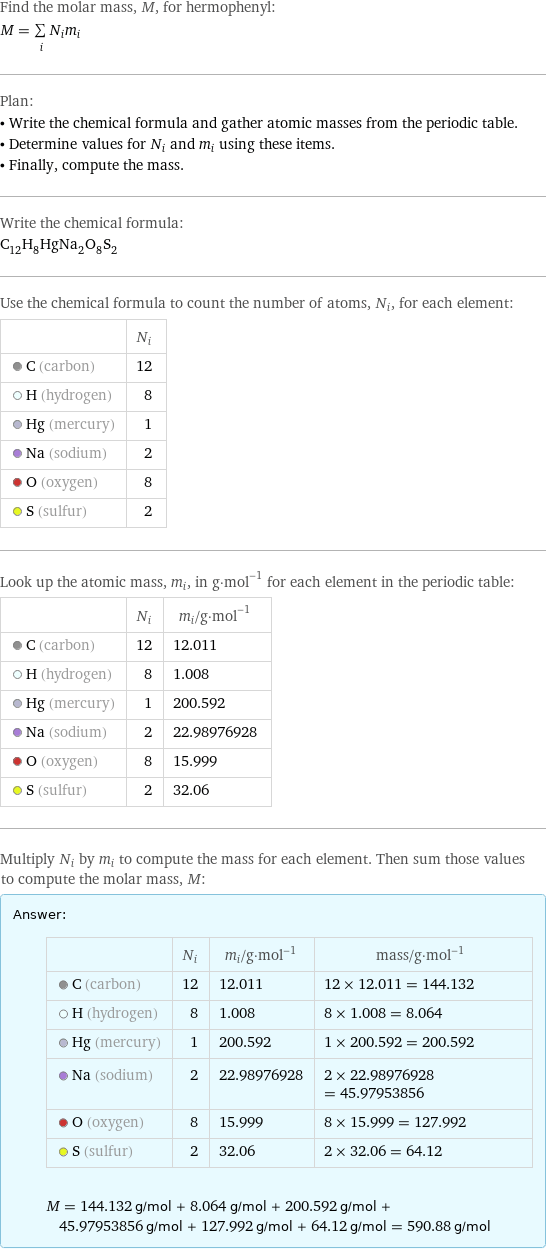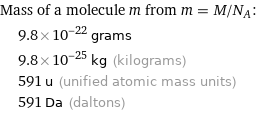Input interpretation

hermophenyl | molar mass
Result

Find the molar mass, M, for hermophenyl: M = sum _iN_im_i Plan: • Write the chemical formula and gather atomic masses from the periodic table. • Determine values for N_i and m_i using these items. • Finally, compute the mass. Write the chemical formula: C_12H_8HgNa_2O_8S_2 Use the chemical formula to count the number of atoms, N_i, for each element: | N_i C (carbon) | 12 H (hydrogen) | 8 Hg (mercury) | 1 Na (sodium) | 2 O (oxygen) | 8 S (sulfur) | 2 Look up the atomic mass, m_i, in g·mol^(-1) for each element in the periodic table: | N_i | m_i/g·mol^(-1) C (carbon) | 12 | 12.011 H (hydrogen) | 8 | 1.008 Hg (mercury) | 1 | 200.592 Na (sodium) | 2 | 22.98976928 O (oxygen) | 8 | 15.999 S (sulfur) | 2 | 32.06 Multiply N_i by m_i to compute the mass for each element. Then sum those values to compute the molar mass, M: Answer: | | | N_i | m_i/g·mol^(-1) | mass/g·mol^(-1) C (carbon) | 12 | 12.011 | 12 × 12.011 = 144.132 H (hydrogen) | 8 | 1.008 | 8 × 1.008 = 8.064 Hg (mercury) | 1 | 200.592 | 1 × 200.592 = 200.592 Na (sodium) | 2 | 22.98976928 | 2 × 22.98976928 = 45.97953856 O (oxygen) | 8 | 15.999 | 8 × 15.999 = 127.992 S (sulfur) | 2 | 32.06 | 2 × 32.06 = 64.12 M = 144.132 g/mol + 8.064 g/mol + 200.592 g/mol + 45.97953856 g/mol + 127.992 g/mol + 64.12 g/mol = 590.88 g/mol
Unit conversion

0.5909 kg/mol (kilograms per mole)
Comparisons

≈ 0.82 × molar mass of fullerene ( ≈ 721 g/mol )

≈ 3 × molar mass of caffeine ( ≈ 194 g/mol )

≈ 10 × molar mass of sodium chloride ( ≈ 58 g/mol )
Corresponding quantities

Mass of a molecule m from m = M/N_A: | 9.8×10^-22 grams | 9.8×10^-25 kg (kilograms) | 591 u (unified atomic mass units) | 591 Da (daltons)

Relative molecular mass M_r from M_r = M_u/M: | 591